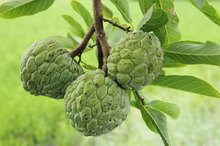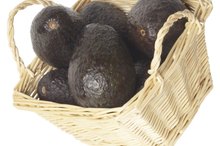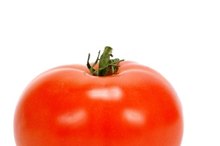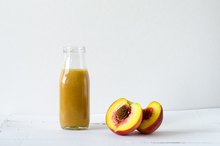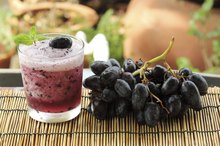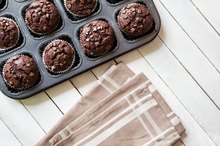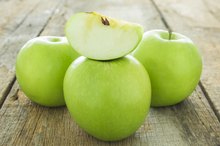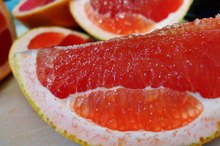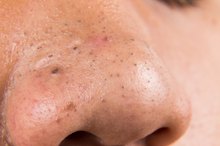How to Keep Sliced Avocados From Turning Black
Avocados -- an essential ingredient in guacamole and other Tex-Mex favorites -- is high in heart-healthy mono- and polyunsaturated fats and other essential nutrients. While avocados can contribute to a healthy diet, storing cut avocados presents a challenge. Slicing avocados disrupts the cell structure of the fruit, exposing them to oxygen. Oxidation turns the cut surfaces brown or black in a couple of hours. Brushing cut avocados with an acidic liquid can keep them attractively green longer.
Cut the avocado lengthwise, using a serrated knife to slice through the tough skin. When the knife edge hits the pit, rotate the avocado until the two halves separate. Gently pull the halves apart.
How to Eat Cherimoya
Learn More
Remove the pit from the avocado flesh and discard.
Pour about 1 tbsp. of lemon juice into the small bowl. Dip a silicone pastry brush into the lemon juice and then sweep the juice over the entire cut surface of the avocado halves.
The Signs of an Avocado Being Spoiled
Learn More
Cover the avocado halves tightly with plastic wrap, making sure that the wrap is flush against as much of the avocado flesh as possible.
Refrigerate the avocado halves until you're ready to use them. Cut avocados will stay fresh for only a day or two.
Tips
The belief that keeping the pit inside the cut avocado ensures freshness is a myth, according to the Hass Avocado Board. Though the large, round pit limits the amount of flesh exposed to oxidation, the seed doesn't contain any nutrients that prevent browning.
To prevent mashed avocado or guacamole from oxidation, place the avocado in a bowl and press plastic wrap over the surface of the fruit. Then cover the bowl with another sheet of plastic wrap and refrigerate for up to one day.
Warnings
If oxidation occurs and the cut surface of the avocado turns black, all is not lost. Simply cut off the oxidized layer of the fruit and discard. Use the avocado immediately.
